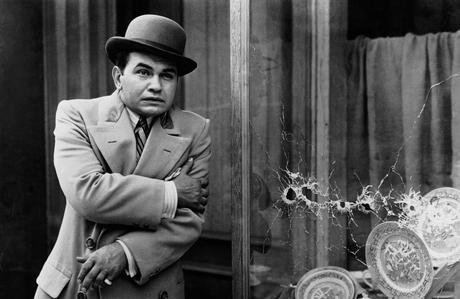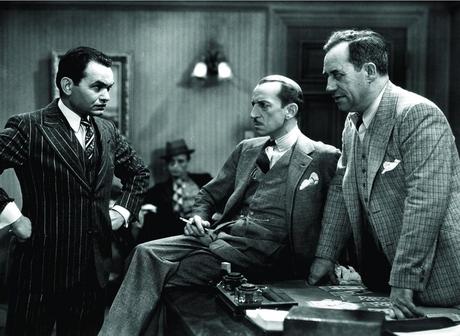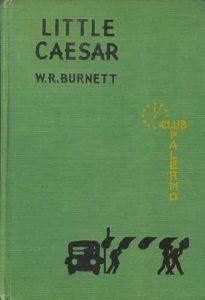
The gangster film genre has roots dating back to the silent era, but in 1931, Warner Brothers brought it to new heights with the release of two movies: Little Caesar and The Public Enemy. Of the two, Little Caesar was released first, making a star of Edward G. Robinson and turning him into a gangster film icon. But before Little Caesar became a classic gangster film, it was a book published by W.R. Burnett.
Book & Movie Differences
For the most part, Little Caesar is a pretty respectable adaptation of the book. It doesn’t follow the book exactly, but the key events are there, like the New Year’s Eve nightclub robbery, the banquet for Rico, Rico’s rise to power, and Joe trying to leave the gang. Much of what the movie leaves out are things like how various characters spend the time leading up to the nightclub robbery and character details like how Rico relates to women.
Some of the most significant differences between the book and the movie involve Joe (Douglas Fairbanks Jr.) The movie version tries to give Joe a redemption arc that he doesn’t get in the book. While both the book and the movie show Joe as wanting to get away from the gang so that he can focus on a career as a dancer and a life with Olga, the book has him return to the gang again on his own accord after getting the tip about a planned attack on Rico rather than Rico threatening him into returning. After Joe returns, he stops thinking about the idea of leaving the gang again.
In the book, Joe was very anxious about being caught after the nightclub robbery. But after some time had passed and he hadn’t been recognized, he started to relax a little. Of course, this is when a witness to the robbery finally does recognize him and causes a scene during one of his dance performances. It isn’t long before Joe is arrested, thrown in jail, and confesses to the police about everything. It has nothing to do with Olga calling the police and telling them Joe is ready to talk.

The ultimate end of Rico in the book is also pretty different from what happens in the movie. The book has Rico leaving town, taking over a new gang, and helping that gang become successful. But rather than bringing on his own demise by trying to respond to a comment he reads in the newspaper, like we see in the movie, Rico ends up being taken down after someone in his new gang says too much to the wrong person.
Is the Book Worth Reading?

Little Caesar isn’t going to make any lists of the all-time greatest novels ever written, but I really liked reading it. Since I love these kinds of 1920s/1930s gangster stories, this was right up my alley. This book is pretty much exactly what you think of when you try to imagine a stereotypical 1920s gangster story — a gangster longing for more power, a big heist, and lots of classic gangster nicknames like Scabby and Big Boy. It absolutely set the stage for the whole genre.
W.R. Burnett was very influential on the gangster genre, with other works including other notable crime novels like High Sierra and The Asphalt Jungle and screenwriting work on Scarface. Compared to High Sierra, I’d say High Sierra was the stronger of the two books, but Little Caesar was the one I had more fun reading. It’s an engaging but easy read that I’d definitely recommend to anyone who loves 1920s and 1930s gangster movies as much as I do.
This review is part of the 2023 Classic Film Summer Reading Challenge hosted by Out of the Past. For more reviews on books related to classic film, be sure to follow the #ClassicFilmReading hashtag on social media.
